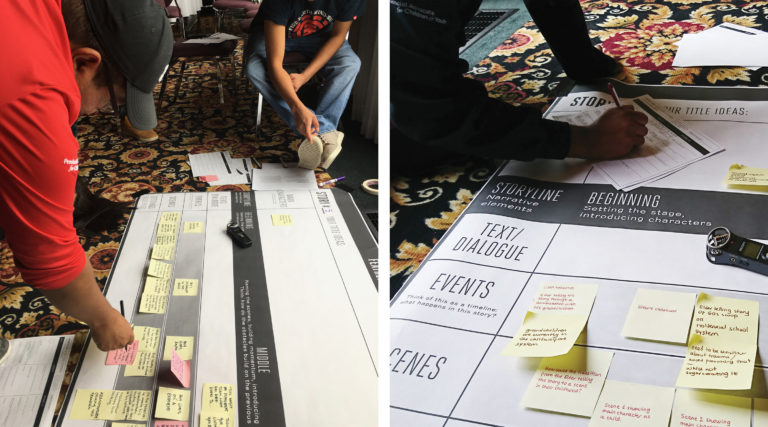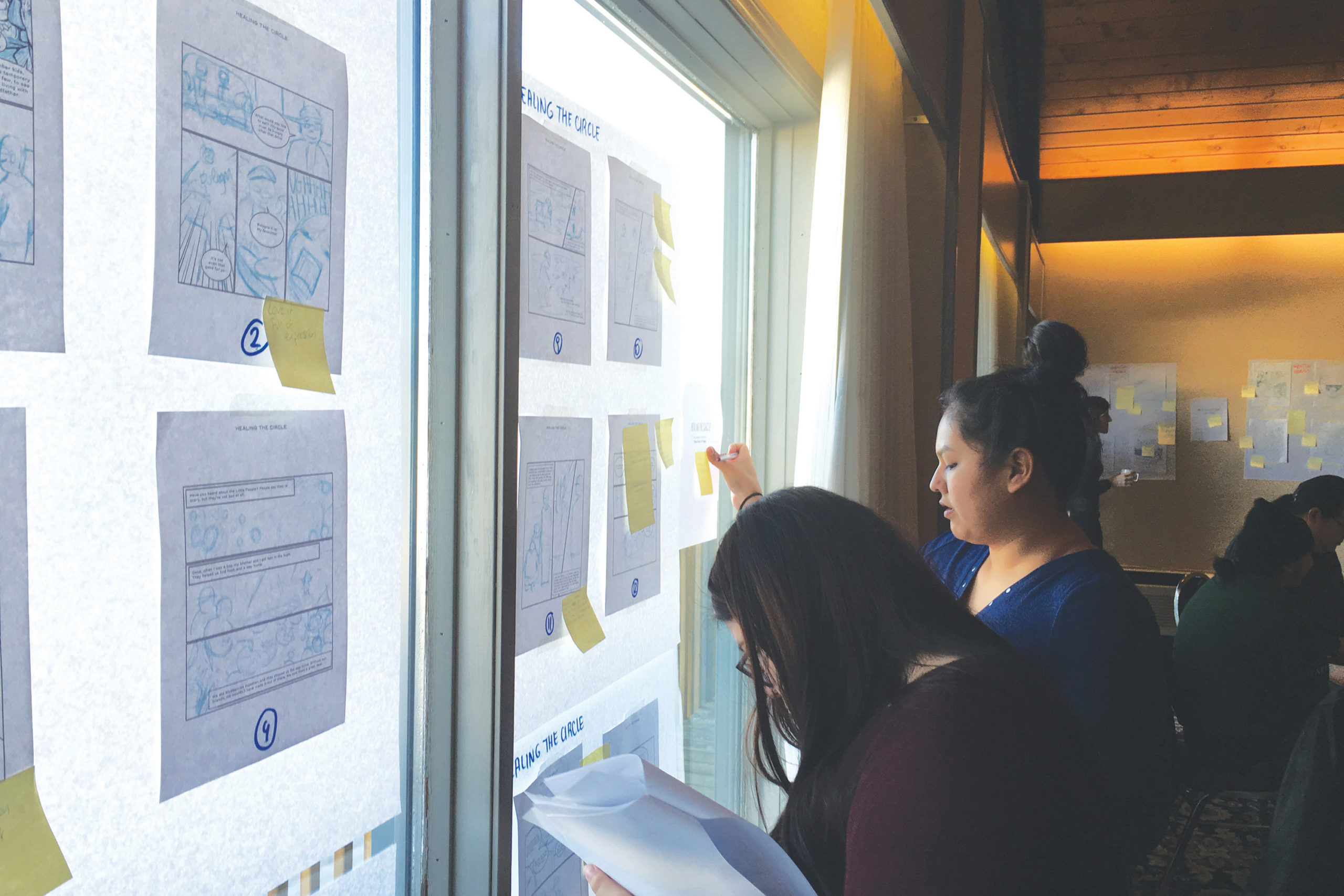
Feathers of Hope wanted to forge a sense of belonging for Indigenous youth. We supported a large group of youth in conceiving, writing, and illustrating three graphic novels that told stories about culture, identity, and Indigenous history.
PARTNERS
Offerings
LOCATION
BACKGROUND
In the summer of 2016, more than 100 Indigenous youth took part in the Feathers of Hope Culture, Identity, and Belonging forum in Thunder Bay, Ontario.
The forum took place one year after the Truth and Reconciliation Commission concluded that Canada had intentionally and systematically conducted a campaign of cultural genocide against Indigenous people.
Because of this history, many of the forum participants grew up without access to their traditional languages and customs. The forum was an opportunity for young people to connect in their shared experiences, learn about ceremonies and teachings, and speak to the change they wanted to see in the world.
The Co-Design Process
After the forum, Feathers of Hope gathered an advisory group of a dozen youth participants. They decided that the most impactful way to present what they heard and learned at the forum was to create a graphic novel series. They wanted the books to help connect other Indigenous youth to their culture, identity, and a sense of belonging.
Over the course of several meetings, advisors crafted characters and storylines based on the themes they heard at the forum. And Also Too’s facilitation methods drew on theatre, oral storytelling, and creative writing.
A pivotal moment in the co-design process was a story retreat we hosted in Toronto. And Also Too gathered with Feathers of Hope staff, writer Elton Beardy, and illustrator Kaia’tanó:ron Dumoulin Bush to create storyboards for each graphic novel. At this moment, the stories — which had previously just been ideas on sticky notes — suddenly came to life.
The Outcome
The youth advisors then reviewed the finished storyboards. The feedback they provided, which was both candid and thorough, vastly improved both the artwork and the story.
The Feathers of Hope graphic novels demonstrate how culture, identity and belonging help Indigenous young people know who they are. They speak of the strength of their nations, communities, and families, despite the impact of ongoing policies that continue to perpetuate harm against Indigenous people, lands, and cultural practices.
DOWNLOAD THE GRAPHIC NOVELS
Blueberries: Healing the Circle
In Blueberries: Healing the Circle, an Elder shares with his grandchildren his journey of healing from the trauma inflicted by Canada’s residential school system.
Manidoo Makwa
In Manidoo Makwa, a young woman discovers her purpose as a defender of her community’s traditional land through cultural teachings.
CREDITS
Stories
WRITING
Illustration
Graphic Novel Consultant
Cover Photography
Time Frame
December 2016 – December 2019
Co-design: 8 months
Production: 6 months










